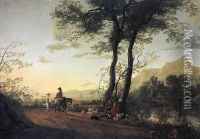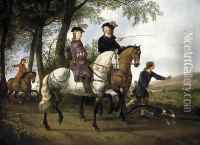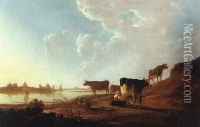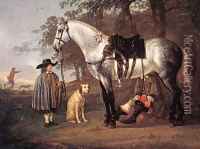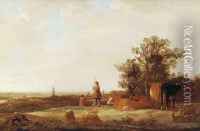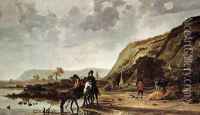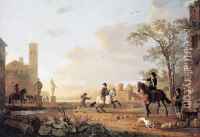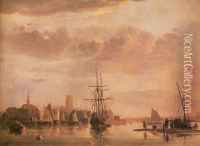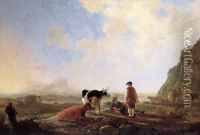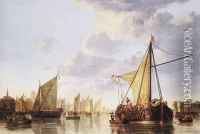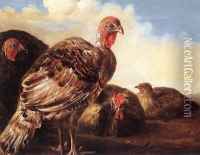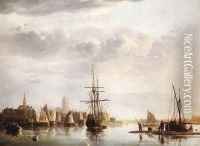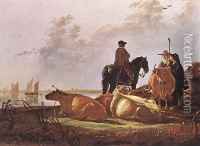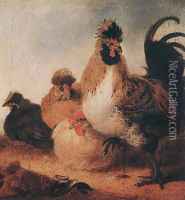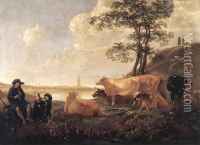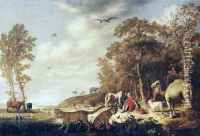Aelbert Cuyp Paintings
Aelbert Cuyp was a Dutch landscape painter born in Dordrecht in 1620. He was one of the leading Dutch Golden Age painters, celebrated for his lush, light-filled landscapes and pastoral scenes. Cuyp's work is characterized by a warm, golden light and a masterful rendering of the Dutch countryside, often featuring calm rivers, cows grazing, and distant figures set against expansive skies. His paintings reflect a serene, idyllic view of rural life that was highly sought after in his time and remains beloved today. Cuyp was born into an artistic family; his father, Jacob Gerritsz. Cuyp, was a portraitist of some repute. This environment undoubtedly nurtured his early interest in painting. However, Aelbert's work would eventually far surpass the popularity and recognition of his father's. He is believed to have been largely self-taught, with his style showing influences from the likes of Jan van Goyen, Willem van de Velde the Elder, and especially Simon de Vlieger, from whom he adopted the treatment of light and atmosphere that became central to his work. Despite his success, Cuyp's career as a painter was relatively short. He significantly reduced his artistic output after marrying Cornelia Boschman in 1658, the wealthy widow of a Dordrecht burgomaster, which allowed him to live comfortably without the need to sell his art. This turn towards a more leisurely life led to a decrease in his production, although the quality of his work remained high. Cuyp's influence persisted, particularly in England, where his landscapes had a substantial impact on the development of 18th-century British landscape painting. Cuyp died in Dordrecht in 1691. Today, his works are held in high esteem and can be found in major museums around the world, showcasing his contribution to the Dutch Golden Age of painting and his lasting impact on the landscape genre.
